- News
- Reviews
- Bikes
- Components
- Bar tape & grips
- Bottom brackets
- Brake & gear cables
- Brake & STI levers
- Brake pads & spares
- Brakes
- Cassettes & freewheels
- Chains
- Chainsets & chainrings
- Derailleurs - front
- Derailleurs - rear
- Forks
- Gear levers & shifters
- Groupsets
- Handlebars & extensions
- Headsets
- Hubs
- Inner tubes
- Pedals
- Quick releases & skewers
- Saddles
- Seatposts
- Stems
- Wheels
- Tyres
- Tubeless valves
- Accessories
- Accessories - misc
- Computer mounts
- Bags
- Bar ends
- Bike bags & cases
- Bottle cages
- Bottles
- Cameras
- Car racks
- Child seats
- Computers
- Glasses
- GPS units
- Helmets
- Lights - front
- Lights - rear
- Lights - sets
- Locks
- Mirrors
- Mudguards
- Racks
- Pumps & CO2 inflators
- Puncture kits
- Reflectives
- Smart watches
- Stands and racks
- Trailers
- Clothing
- Health, fitness and nutrition
- Tools and workshop
- Miscellaneous
- Buyers Guides
- Features
- Forum
- Recommends
- Podcast
TECH NEWS
First look: GT Grade road bike
GT Bicycles have launched the Grade, a new disc-equipped road bike with space for 35mm tyres and, on some models, a fork with 15mm bolt-thru axle. The range will feature seven bikes with carbon fibre and aluminium models and prices starting from £699 (provisional price).
Road bikes that can take wider tyres and feature disc brakes and relaxed geometry are becoming increasingly popular with the sort of riders who value versatility of function and purpose over the traditional values of a performance-orientated road race bike. In essence the Grade is a road bike with the wider tyre capacity of cyclo-cross bikes and the geometry, comfort features and disc brakes of the latest endurance road bikes. The sort of bike for those that don't race and prefer not to be confined by the limitations of traditional road bikes to only riding on the road with skinny tyres.
The Grade has been nearly three years in development and will be available with either a carbon fibre or aluminium frame at a range of prices, from a £699 Claris-equipped bike right up to a Ultegra and hydraulic disc built model costing £2,999. All feature a frame sharing the same key ingredients, including disc brake across the board, space for up to 35mm tyres, pencil thin seatstays and oversized kinked chainstays. The top few models feature a 15mm bolt-thru front axle, and all bikes share the same regular quick release rear axle.
Categorising these new breed of bikes that blur the traditional lines between road and cyclo-cross bikes aren't easy, so GT have coined the 'EnduRoad' tag. They reckon this sums up the “shift in the road community away from the traditional race mindset”, adding “EnduRoad bikes are the perfect choice for anyone who wants to go on all-day adventures, race a Fondo, or explore those hidden side roads just outside of town.”
The carbon Grade uses Hi-Mod carbon fibre in the oversized down tube and chainstays to ensure plenty of frame stiffness. They worked on the shape and carbon layup of the top tube, seat tube and seatstays to offer a large amount of deflection to smooth out rough roads. The seat tube for example has a bi-directional taper at the bottom bracket, which GT reckons acts like a hinge. It's as wide as the bottom bracket shell for side-to-side stiffness, but allows some fore-and-aft flex. The seatpost is a 27.2mm diameter which helps to offer more available deflection.
While all the frames regardless of material share the same key features, the carbon frame is unique in utilising what GT is calling 'Dual Fiber Dynamics'. These are seat stays constructed with a solid composite glass core and wrapped with a carbon fibre layer, which GT claim offer no weight penalty compared to a hollow tube. They also have a very small outside diameter, at their thinnest they are 6x9mm. GT claims the shallow angle afforded by the Triple Triangle design provides increased deflection.
We asked GT just how much deflection there is in the frame, and they reckon in testing the frame alone produced in the region of 10mm of deflection. Add in the deflection from the 27.2mm seatpost and they reckon it's probably a lot more than that.
These seatstays are incorporated into a frame with GT's famous and iconic Triple Triangle silhouette. The stays are widely spaced around the seat tube which they reckon adds extra impact deflection. Oversized box section chainstays with a kink towards the dropout, in a style reminiscent of BMC's TeamMachine, which is required to mount the disc caliper in the desired location.
The fork is an all-carbon constuction with a tapered steerer tube. GT says they focused on the actual taper of the steerer tube, as they reckon you can tailor the comfort based on the specifics of the taper. As with many new bikes in this category, GT have gone with a 15mm bolt-thru axle.
All frames feature other modern details such as a tapered head tube, press-fit 30 bottom bracket and removeable mudguard mounts. Some of the models are bolstered with a 15mm bolt-thru front axle with a regular quick release rear axle in 135mm spacing, while lower down the range a fork with a regular quick release axle is used. The carbon frame weighs a claimed 950g for a medium, we don't have a weight for the aluminium frame yet.
Unusually for a new frame GT have steered clear of internal cable routing and routed all the cables externally, alongside the bottom of the down tube.
Boosting the versatility are the mudguard mounts, with eyelets in the fork and rear dropout and, at the seatstays, a removable mounting bridge. That means you could fit mudguards for winter riding and commuting, for winter training and, come the summer, ditch the mudguards and you have the clean lines of a road bike.
GT have given the Grade the sort of geometry we're seeing on endurance and sportive bikes, so a long wheelbase, relaxed head angle and taller head tube are the defining features. To pick one of the six sizes, a 56 has an effective top tube of 565mm with a 601mm stack and 381mm reach. The head angle is 71.5 degrees and the seat angle is 73. The wheelbase is 1031mm with 430mm chainstays.
The Grade range features seven bikes, two carbon fibre offerings at the top and the rest using an aluminium frame. Provisional prices see the top-end Grade Carbon Ultegra costing £2,999 gets a carbon fork with carbon steerer, Shimano Ultegra mechanical groupset with R685 hydraulic disc brakes, Stan's No Tubes Grail wheels and Continental Grand Sport Race 28mm tyres.
The Grade Alloy X , the top-end aluminium model, costs £1,599 and uses the same carbon fibre fork with 15mm bolt-thru axle as the two carbon bikes above it in the range. It combines a Shimano 105 mechanical groupset with Shimano R685 hydraulic disc brakes and a FSA Omega Mega EXO 52/36 chainset.
At the other end of the range the £699 Claris model has an aluminium frame with a carbon fork with a quick release axle, Shimano 2400 Claris 8-speed groupset and FSA Tempo 50/34 chainset. The Tiagra model will cost £899, 105 £1,099, the carbon 105 model £2,299. Bikes are expected to be available in September.
We'll have more from the launch over the weekend including a first ride report and interviews with the designer, so stay tuned for more. The bike in the photo isn't a production model, because of lack of availability of Shimano's new ST-RS685 mechanical shift and hydraulic brake lever, it's fitted with the current Di2 groupset, but the rest of the specification is the same as the top-end production model.
David worked on the road.cc tech team from 2012-2020. Previously he was editor of Bikemagic.com and before that staff writer at RCUK. He's a seasoned cyclist of all disciplines, from road to mountain biking, touring to cyclo-cross, he only wishes he had time to ride them all. He's mildly competitive, though he'll never admit it, and is a frequent road racer but is too lazy to do really well. He currently resides in the Cotswolds, and you can now find him over on his own YouTube channel David Arthur - Just Ride Bikes.
Latest Comments
- No Reply 4 hours 47 min ago
Nothing new. Cyclists are public enemy number 1. I was minding my own business yesterday on a very narrow single track lane with passing places. As...
- Hirsute 6 hours 14 min ago
Anyone vomiting whilst driving could have a detrimental effect on others....
- IanGlasgow 7 hours 17 min ago
Indicators for bikes are still with us. The best/least bad I've tried are:...
- IanGlasgow 7 hours 22 min ago
Indicators for bikes are still with us. The best/least bad I've tried are:...
- Terry Hutt 9 hours 16 min ago
I was interested in the EasiCyco backpack until I watched their Kickstarter video. Both their riders' bums rub on the backpack. That's a hard NO...
- redhanded 11 hours 45 min ago
I had 2 bikes stolen from bike shed outside my flat in London last year. They ended up for sale in Russia. A cycling club I'm a member of tweeted...
- Deac 12 hours 46 min ago
I tried the footrest on the way home, it's a great idea, you can keep on the saddle making it easier to get away from the traffic lights, and being...
- ktache 15 hours 40 min ago
Not that they would be as technical, or maybe quite as grippy, but does the skate industry provide any solutions?
- Rendel Harris 16 hours 22 min ago
Sorry to be a killjoy but it doesn't amuse me at all, I hope the idiot gets caught and punished. Putting yourself on the same road as pros...
- willpom @GWRaudax 16 hours 57 min ago
Steve Poulton has just published The Cheltenham Flyer - 10th May https://www.audax.uk/event-details/calendar/13235-cheltenham_new_flyer_200














































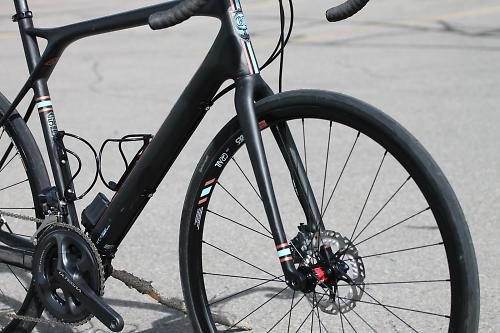
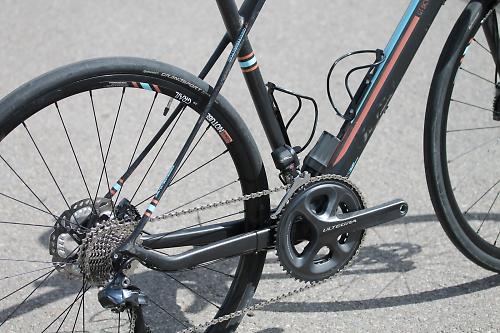
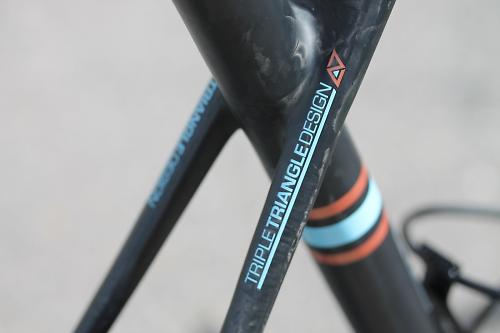
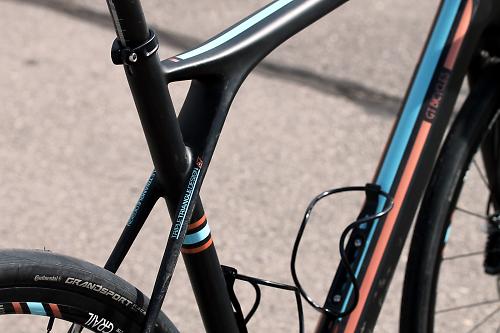
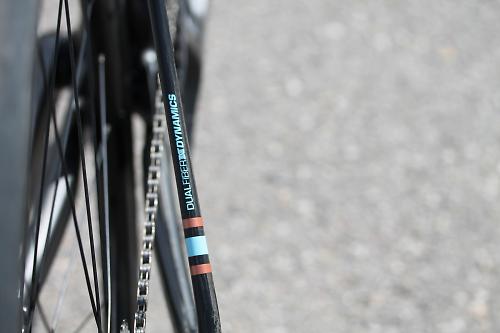
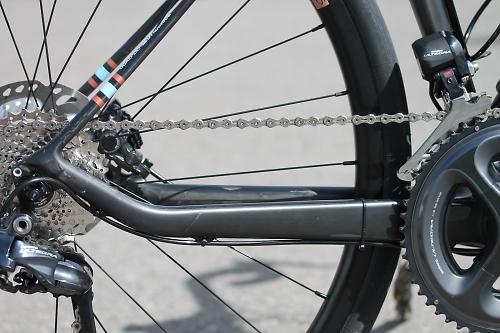
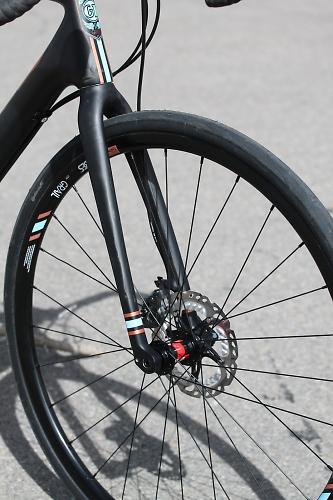
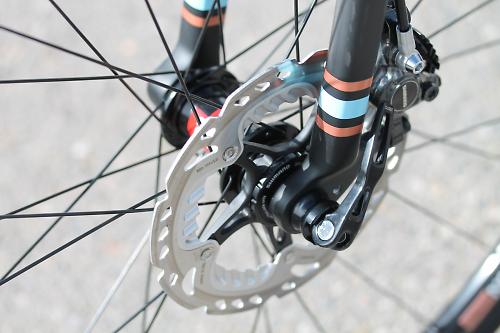
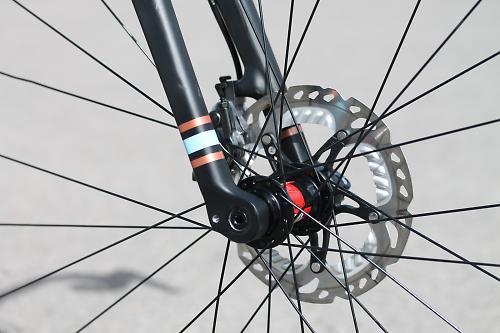
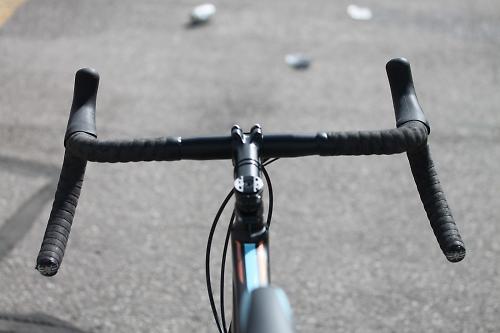
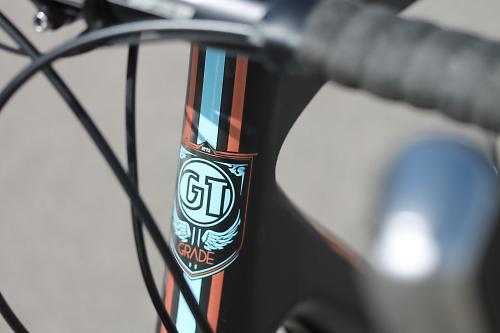
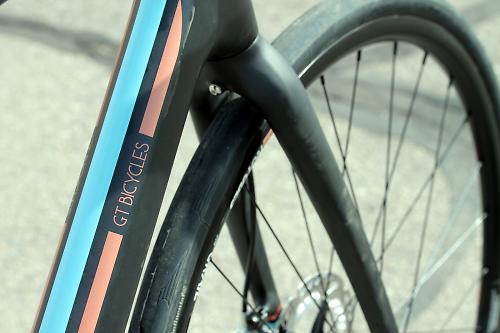
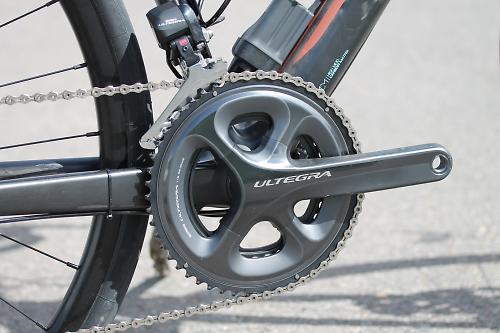
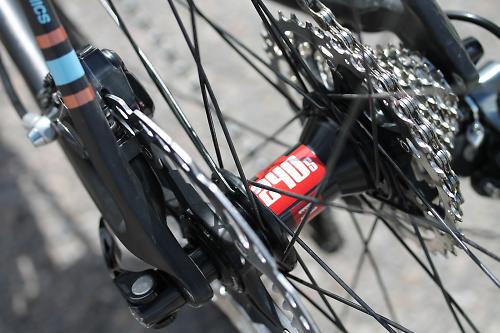
Add new comment
15 comments
no XS size coming to the UK, apparently.
Q. Any possibility of making it any more hideous?
A. Not a chance. Max'd out at this level of Hideousness.
SRAM levers??!! that would really boost the Hideousness
This looks tickety boo...
A long wait indeed Rupert; rim brakes are consigned to history, and rightly so. The next generation of riders will wonder how on earth we became so attached to a brake that ate its way through our expensive wheels and whose efficiency dropped by half on a rainy day.
There are many cycling developments I will resist, the electric gear change springs to mind, but disc brakes are firmly entrenched in my shed.
Brakes don't eat their way through these and their effectivity in the rain is largely the same as in the dry..
IMG_8524_0.jpg
Ah lovely - if only I could afford them...
Which Mavic's are these please...?
Ksyrium SLR.
I wouldn't buy a road bike with disc brakes because I am waiting for frame manufactures to develop their internal frame rim brakes. I might have a long wait it seems.
For my own particular tastes and preferences, that design appeals to me. If I were buying, I'd certainly take a close look.
I would like to know how the seat tube tapering allows it to act like a hinge?
It has a very rigid looking down tube attached to one side of the bb (that will not bend) & is braced by the seat stays at the top. The chain stays also look quite 'beefy'. So where does the deflection happen??
I think they're alluding to the fact that it tapers in from fore to aft and flares out sideways (or port and starboard if you want) - and so it would look to move more in one direction than the other. I too am a wee bit sceptical whether it really translates into any noticeable difference in longitudinal frame compliance and lateral stiffness although i'm sure they have tons of FEA data showing it does exactly that. Could I tell the difference ? Doubtful.....
“EnduRoad bikes are the perfect choice for anyone who wants to go on all-day adventures, race a Fondo, or explore those hidden side roads just outside of town.”
Erm what are touring bikes for? Of are they just not in fashion anymore?
Why does everything these days have to resemble the bastard lovechild of a mountain bike and a full carbon road racer.
I was in love right up until "long wheelbase, relaxed head angle and taller head tube"